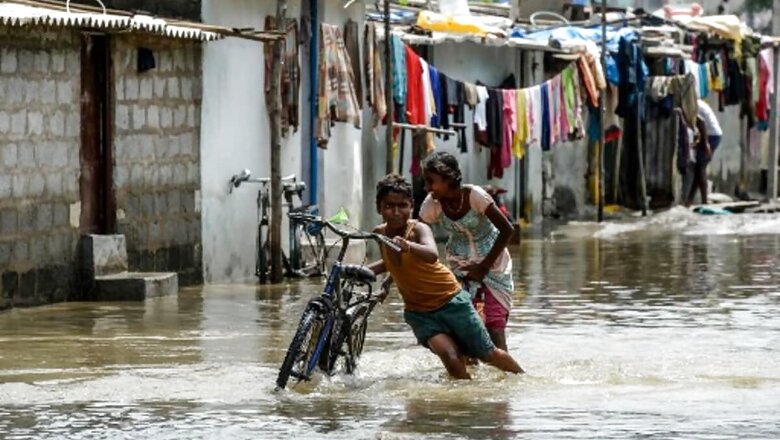
views
Nearly two weeks after the deluge, Hyderabad has pieced itself together and limped back to normalcy. But what remains are ever-growing mounds of waste which are now making their way into the water bodies in areas that were the worst-affected by the floods.
The shrinking Shah Hatim Talab, located behind the majestic Golconda Fort, has now turned into a dumping site for discarded household goods, construction waste, and tons of plastic floating in different forms. For the residents of Nadeem Colony, it has now become a common sight.
“Every day we see trucks driving out garbage and depositing it near the lake. Even residents who aren’t able to refurbish damaged furniture are doing the same. The stench of the rotting waste is unbearable,” says Athar, who lives a stone’s throw from the lake.
Like Athar, other residents of Hafeez Baba Nagar and Al-Jubail Colony fear an outbreak of vector-borne diseases like malaria and dengue. Though floodwaters in these areas have receded, the narrow open drains are now choking with sewage water and plastic, becoming an ideal breeding ground for mosquitoes.
“Days after the floods, GHMC officials distributed tablets and sanitised our area with bleaching powder to contain the spread of diseases, but that happened only for a week. Most of us here don’t have access to clean water which makes us vulnerable to stomach ailments, skin diseases, and UTIs,” says Hafeeza, a college student in her early 20s, whose family is still reeling from the damage wrought by floodwaters that entered her home
OVER 18,000 METRIC TONNES OF FLOOD GARBAGE CLEARED & DUMPED
Since October 19, the Greater Hyderabad Municipal Corporation has embarked on a special drive to clear out debris from the worst-affected areas in the city. The highest amount of garbage was collected from Charminar Zone, which generated nearly 10,000 metric tonnes of waste.
While the waste-clearing operation has been underway in full swing, the main challenge here is its proper disposal. The civic body has come under fire for dumping construction and demolition waste along with garbage by the side of roads.
A GHMC official under the condition of anonymity admitted that authorities are yet to come up with a ‘concrete strategy’ regarding waste management. “The focus right now is on ensuring normalcy in low-lying colonies which were impacted by floods. Most of the waste will be incinerated,” the official added
PERENNIAL PROBLEM OF ENCROACHMENT
While authorities are looking at temporary fixes to alleviate problems, rampant encroachment of lakes continues to remain the biggest concern. Anant Maringati, urban geographer and director of Hyderabad Urban Labs, said rapid urbanisation has clogged the city’s natural drainage system and that the situation could get worse if the Telangana government doesn’t take proactive steps in addressing it.
“Hyderabad has always been bound by the catchment areas of the Godavari and Krishna basin. It used to be a city of irrigation tanks, stepwells, nallas, etc, but today the intricate system of drainage has been disrupted. Vast tracts of wetlands have been flattened and turned impervious. Until we develop our urban landscape, we will keep suffering,” he warned.
Environment activist Thakur Rajkumar Singh said back in the 1990s, Hyderabad was known as the ‘City of Lakes’, but the IT boom spelled doom for the city. “From being home to over 534 lakes which formed a chain-like pattern to prevent flooding, Hyderabad now has just 189 water bodies which are on the verge of vanishing,” he said.
As per official data released in 2017, urban planning agency Hyderabad Metropolitan Development Authority (HMDA) has 3,132 lakes under its ambit, but now 50% of the water bodies have turned into sewage repositories, reducing the holding capacity and thereby resulting in flash floods during heavy rains.
From being a major source of drinking water to now being reduced to a third of its size filled with waste and rotting algae, the historic Shah Hatim Lake bears a sorry testimony to how bad planning is causing incalculable damage year after year, slowly but steadily.
Read all the Latest News and Breaking News here




















Comments
0 comment